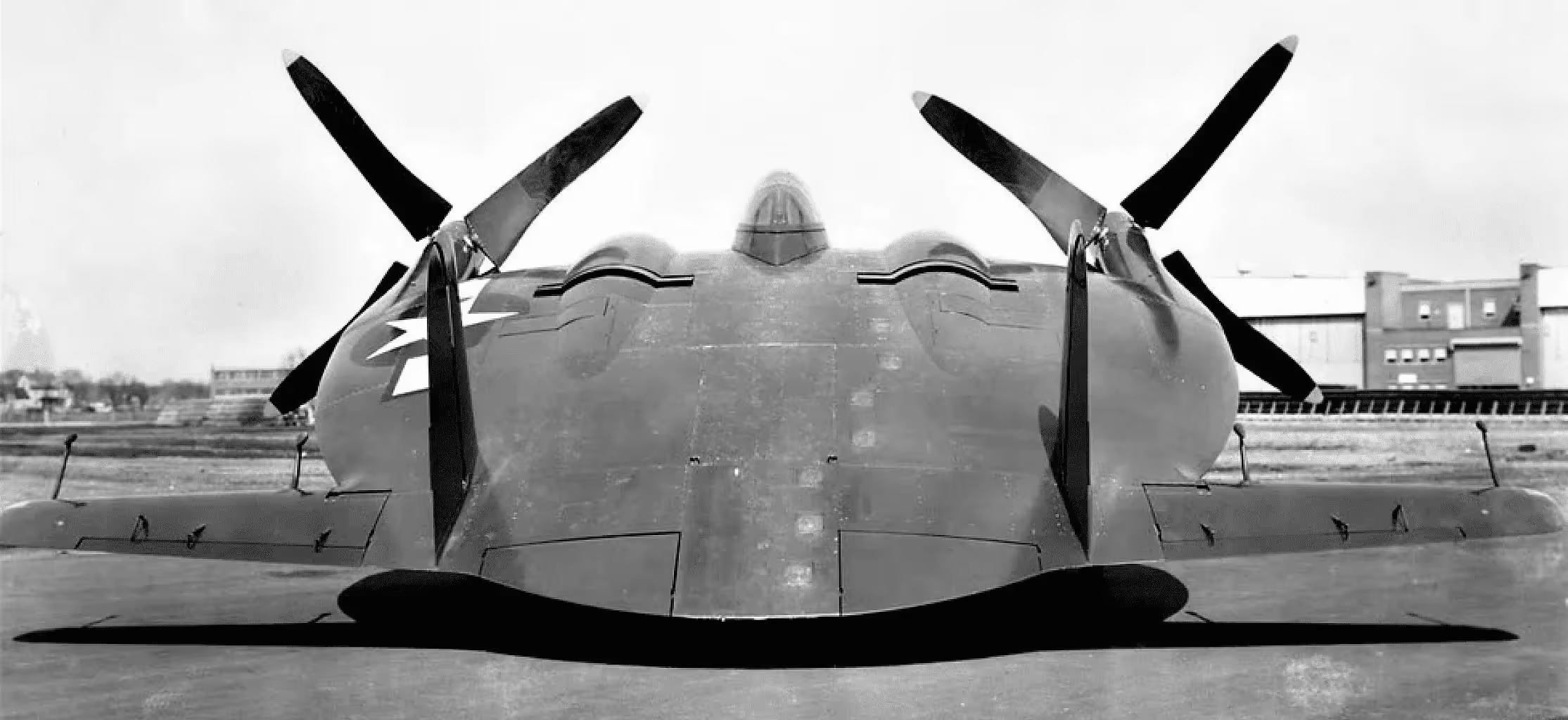Warplanes of the USA: Vought XF5U
Vought XF5U

(USN Photo)
The Vought XF5U "Flying Flapjack" was an experimental U.S. Navy fighter aircraft designed by Charles H. Zimmerman for Vought during World War II. This unorthodox design consisted of a flat, somewhat disc-shaped body (resembling a flying flapjack/pancake, hence its nickname) serving as the lifting surface.[1] Two piston engines buried in the body drove propellers located on the leading edge, at the wingtips.




(USN Photo)
Vought XF5U-1.
Rear view of the XF5U-1 shows padding taped to the aircraft to protect its Metalite surface. The engine cooling air exit flaps are open. The intercooler doors have been removed, which aided engine cooling during ground runs. Note the tail markings on the aircraft.

(USN Photo)
Vought XF5U.
The U.S. Navy canceled the project on 17 March 1947, and the prototype aircraft (V-173) was transferred to the Smithsonian Museum for display. Although two aircraft were constructed, a lone XF5U-1 underwent ground runs but never overcame vibration problems. Taxi trials at Vought's Connecticut factory culminated in short "hops" that were not true flights. The only completed XF5U-1 proved to be so structurally solid that it had to be destroyed with a wrecking ball. (Wikipedia)

(USN Photo)
The XF5U mockup was finished in June 1943. Note the gun ports by the cockpit. The mockup had three-blade propellers and single main gear doors.





